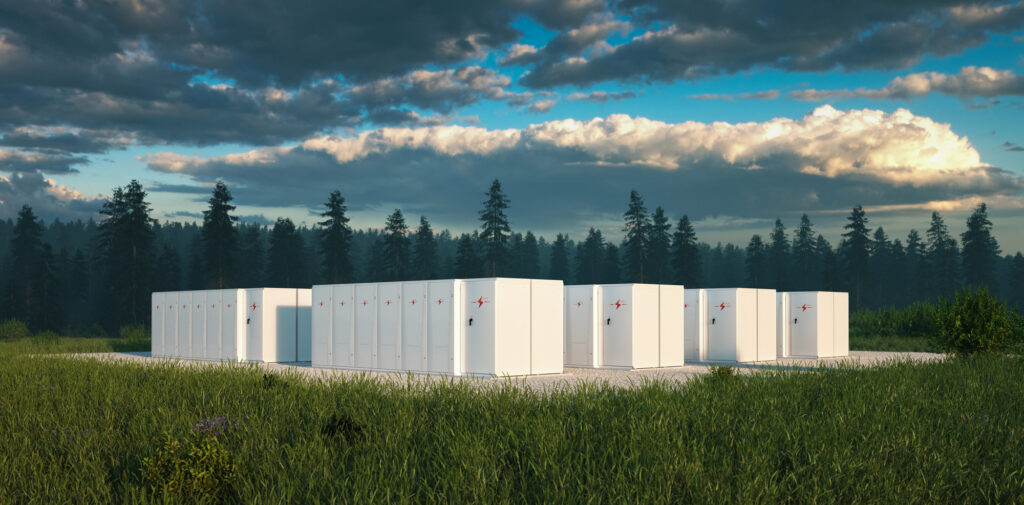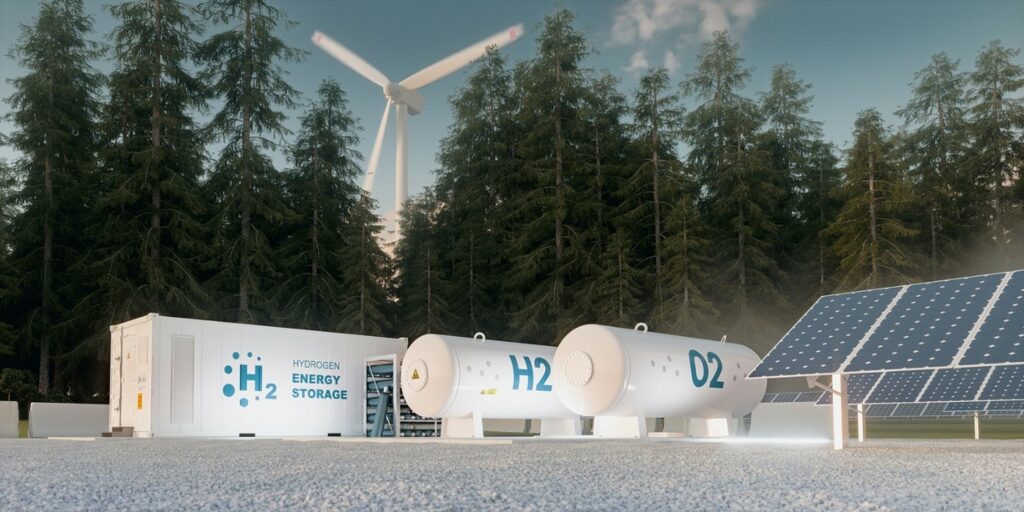
As society continues to strive towards a greener future, the importance of an energy storage network becomes increasingly apparent. While the applications of energy storage are black and white, the intricate technologies involved in them are anything but. In this blog post, we will dive into the different technologies involved in an energy storage network.
Lithium-ion Batteries
The most efficient, and arguably most popular battery to be used within an Energy Storage Network is the lithium-ion battery. Known for their high-energy density and efficiency, these long-life powerhouse batteries are widely used across the residential, commercial, and industrial sectors. Their high-energy density specifically is a remarkable feature, as this means that they can store a substantial amount of energy in a relatively small space.
Lithium-ion batteries are commonly used not just for energy storage, but also for several electrical devices like mobile phones and laptops.
In most ways, lithium-ion batteries are the full package when looking at energy storage: they are perfect for applications which require a lot of power, they last a long time without suffering wear and tear, and their price has dropped significantly over the years, making them that much more accessible for people. While the issue of lithium as a finite resource is definitely a strong consideration, there is promise that research can minimise this and make lithium-ion batteries even more sustainable.
Pumped Hydro
When looking at large-scale energy storage, particularly within the industrial or commercial sectors, pumped hydro storage is the most common technology to be used, representing 94% of the global installed energy storage capacity. The reason for this is that pumped hydro storage is by far the largest capacity form of energy storage. Pumped hydro works by using excess energy generated by photovoltaic systems to pump water from a lower reservoir to a higher reservoir in periods of low energy demand. During times of high energy demand, this water is then released to turn turbines, therefore generating electricity.
Pumped hydro technology has been around for years, and as such has seen several improvements and optimisations. However, that isn’t to say that they aren’t without their drawbacks. Due to their industrial size, construction and installation costs can be very high, and specific geography is needed to install them, which can come with a separate cost.
Thermal Energy Storage
Thermal energy storage employs vastly different technologies compared to the likes of others on this list. As the name suggests, this method involves the storage of surplus thermal energy for up to days and months and is primarily used for commercial or industrial purposes. This is done by heating or cooling a storage medium during low energy demand periods where there is a surplus of electrical energy (usually from the grid).
When energy is in high demand, this stored thermal energy is released to be used in buildings for air heating or cooling, reducing the need for electrical energy to power air-conditioning or refrigeration systems, and as a result, leading to lower electrical costs.
There are different types of thermal energy storage which are commonly used. These are: sensible, latent, and thermochemical. Sensible thermal storage involves heating or cooling a material like water, rock, or molten salts. Latent thermal storage stores thermal energy within a state change of a material, such as when water turns to ice. Thermochemical storage uses chemical reactions to store and release thermal energy.
While there are obvious advantages to this storage technology such as lessening strain on the grid and decreasing electrical costs, thermal energy storage also has its share of disadvantages. For example, the energy density of thermal energy storage is vastly smaller than the likes of other competitors such as pumped hydro storage. This means that they are often very bulky in their size, and as such aren’t appropriate for residential use.
Flywheel Energy Storage
Flywheel energy storage is an innovative method which involves the conversion of surplus energy to rotational energy in the form of a flywheel (a spinning rotor). This spinning rotor releases energy by slowing down from its rapid speed.
While electrical energy is a common means of spinning the flywheel, mechanical energy is steadily being introduced as an alternative.
When compared to its rivals, flywheel energy storage has a number of excellent advantages. For instance, it can absorb and release energy almost instantly, which makes it helpful for applications that need quick reactions. Flywheel systems also have a far longer lifespan than some of its rivals since they don’t deteriorate over time from repeated cycles of charging and discharging.
Flywheel systems, however, can have certain disadvantages. Firstly, to reduce energy loss, the systems need low-friction surroundings. Large-scale implementation of the devices may also be expensive due to the complicated energy conversion and storage processes they require. Finally, strong containment structures are required due to the high spinning speeds.
Hydrogen Energy Storage
A revolutionary storage solution to be sure, hydrogen energy storage follows the conversion of electricity into hydrogen through electrolysis. This stored hydrogen can then be converted back into electricity via fuel cells or traditional generators when required.
This versatile technology can be used across the residential, commercial, and industrial sectors.
By far, hydrogen energy storage provides the best storage duration against all competitors. Hydrogen as a resource is also in abundance, meaning that there is less risk of resource exhaustion compared to the likes of lithium-ion batteries, therefore making this a very environmentally-friendly choice.

With that said, the efficiency of these systems can be difficult, with significant energy losses at each step. These systems can also be very pricey.
The Hydrogen Energy Storage System from H2Solar is a well-known example of this technology in action. Modern proton exchange membrane (PEM) electrolysers and fuel cells are used in the system. These are known for being very safe and efficient.
The technologies in this blog post are just some of several that are involved in an Energy Storage Network, with more surely on the horizon for years to come as the industry evolves further.







